You might already know that from time to time I like to write an article about a coin or banknote series that I think deserves much more recognition than it actually gets in the collecting world. With that spirit, today we take a look at the beautiful 1926 coin series from Albania.

I’ll show them to you below. But, to truly understand where such a beautiful series comes from, we have to dive into Albania’s interwar history.
So let’s get to it.
The First World War in Albania was brutal
The beginning of modern Albania’s existence as a country is relatively recent. After over 500 years of Ottoman domination, the 1913 Treaty of London, which ended the First Balkan War, recognized Albania’s independence.
In that treaty, the Great Powers imposed a monarchy on Albania, which would now be a principality. The new monarch would be some German prince named Wilhelm of Wied, who took the name Vilhelm I. And that would be the only Albanian thing about him. He knew nothing about the country, its language, its customs or its political situation.
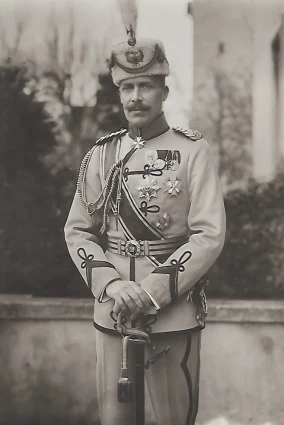
Furthermore, the Great Powers established an International Control Commission with representatives from each of them, who would exercise close surveillance over the new country.
But since 1912, not one, but two different governments had been competing for power in the country. One was the Provisional Government of Albania, with its capital in Vlore and Ismail Qemali in charge, who is now considered the father of the Albanian state. The other was the Central Republic of Albania, with its capital in Durres, headed by Essad Pasha and sporting a traditional Muslim character.

Well, Prince Wilhelm arrived in Albania on March 7, 1914. And the first thing Pasha did was to mount a rebellion of Muslim peasants against him.
It would be quashed by Dutch, Italian, and Austrian soldiers commanded by the International Control Commission. But this was just the first example of a series of almost simultaneous rebellions in the north and south of the country along ethnic and religious lines, while neighboring countries interfered in Albanian internal affairs at the slightest opportunity, and the Commission itself constantly undermined the Prince.
And on July 28th, the First World War broke out.
Faster than a birth, busier than the toilets at a music festival
Guillermo tried to keep the country in a state of neutrality, but he failed. On September 3, he grabbed his things and went into exile. He was monarch for less than 9 months.
From then on, the situation became anarchic, and Albania became a battlefield. Almost immediately, neighboring countries sent their troops into Albanian territory. First, Serbia occupied the center and north, Greece the south, and Italy the city of Vlore (which had been promised to them if they entered the war on the side of the United Kingdom, France, and Russia).
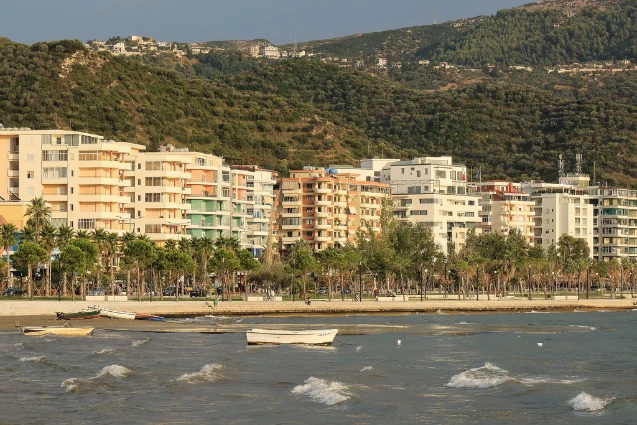
In 1915, Austro-Hungarian and Bulgarian troops ousted the three occupiers and established what they called a “friendly occupation.” They left the existing local administration in power and began to promote the use of the Albanian language to try and counter the growing Italian influence in the area.
In 1916, France and Italy occupied the south of Albania. And the situation remained that way until the end of the war, when the Salonica Front finally collapsed and the Austrians withdrew from the country.
Long story short, six different countries occupied Albania in four years.
Risk of Disappearance
The major concern for Albania in the last moments of the war was the possibility of the country being partitioned and divided among its neighbors. Greek, Italian, and Yugoslavian interferences in Albania’s political life were still enormous.
And that fear was further exacerbated when at the Paris Peace Conference, which was going to definitively end the Great War, Albanian delegates were rejected at the door. Suddenly they were desperate, so they offered to put an Italian prince on the throne of Albania and firmly enter the Italian sphere of influence.
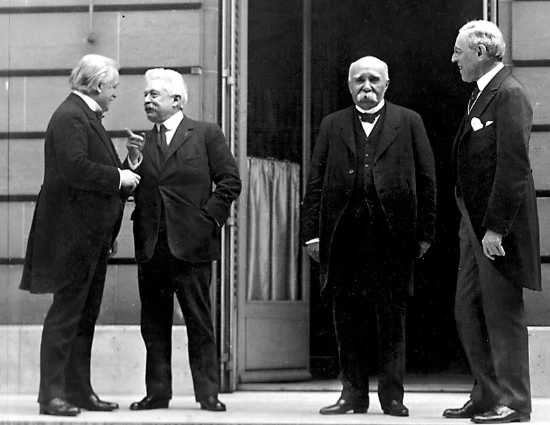
But it wasn’t enough. Officially, the treaty was going to recognize the spheres of influence of the three neighbors.
And today Albania wouldn’t exist if it weren’t for the personal insistence of Woodrow Wilson, President of the United States, who blocked the Peace Treaty until Albanian independence was recognized.
Although officially Albania would still be a Principality governed by a Regency Council, in practice there was no unified command. Between July and December 1921, up to 5 prime ministers passed through the government.
And all of this, after having fought a war to oust Italian troops from Vlore, and with part of the north of the country declaring independence for a few months, with the name of the Republic of Mirdita.
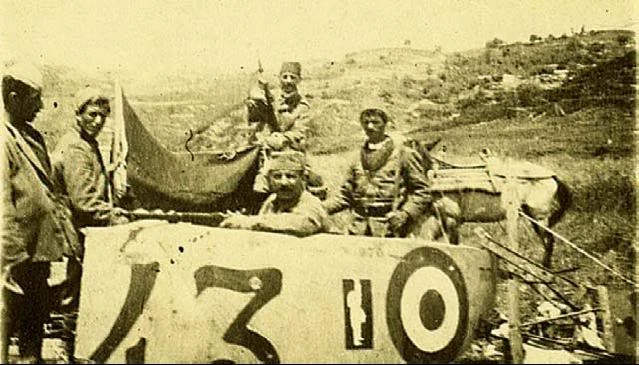
In the last of those five governments, there was a rising star, a guy who at just 24 years old had already been appointed Minister of the Interior: Ahmet Muhtar Zogolli. History would eventually know him as Zog of Albania, but I’m getting ahead of myself.
Civil War
Zog soon revealed himself as a despot. In fact, the fall of the government in which he served as minister was his fault. When he ordered the use of disproportionate violence against peasants in the central part of the country to disarm them, some ministers, led by Fan Noli, resigned from the government.
His redemption in the eyes of Albanian elites came when he defended Tirana from a rebellion of those same peasants he tried to disarm, which arose directly from that disproportionate violence. In 1922, he was offered the position of Prime Minister.
But Noli and Zog had already become irreconcilable enemies, and soon they were engaged in a civil war. Noli was supported by Italy, and Zog by Yugoslavia, to whom he promised territories and influence if they gave him soldiers.

Zog won.
And in 1925, he proclaimed Albania as a republic, and although officially he was the President, in reality, he was a bloodthirsty dictator who did not hesitate to repress any hint of opposition that emerged.
But his promises to Yugoslavia amounted to nothing. He soon turned around and began to approach Benito Mussolini. And Mussolini, knowing that Zog had no choice but to do what he wanted, and if not, there would be a Yugoslav invasion of Albania, began to dig his claws into more and more areas of Albanian political, social, and economic life.
Including the Central Bank of Albania, which was forcibly relocated to Rome in 1926, remaining under total Italian control.
The 1926 Albanian coin series
It was precisely under the Italian Central Bank’s control when in 1926, the first series of coins of modern Albania was issued.
The series is composed of 9 coins, and all of them were in circulation.
The first is the 5 Qindar Lek, or centimes of lek, made of bronze. With a mintage of 516,000 coins, they are worth between 100 and 150 bucks in high conservation today.
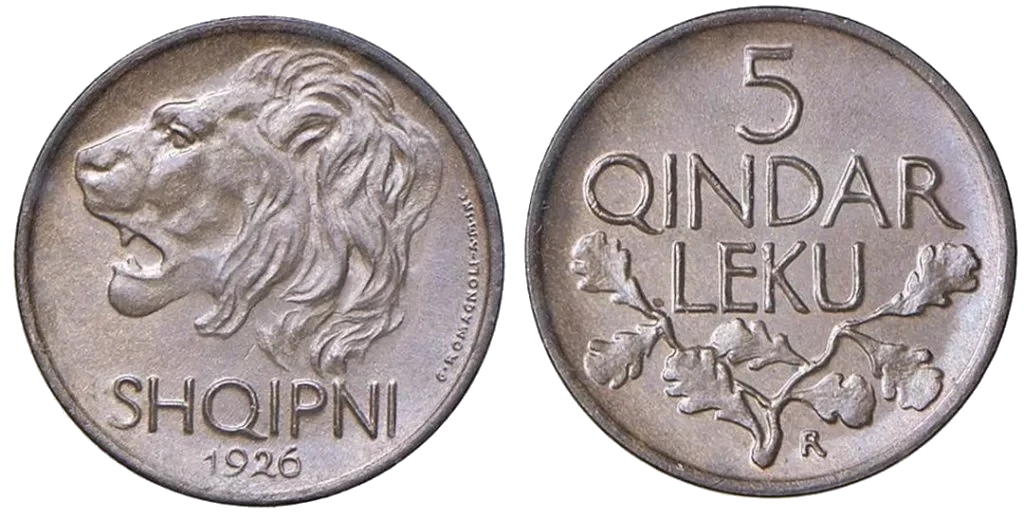
The 10 Qindar Lek piece, also made of bronze, had a mintage of 511,000 coins. Currently, I would pay between 120 and 170 bucks for a uncirculated piece.
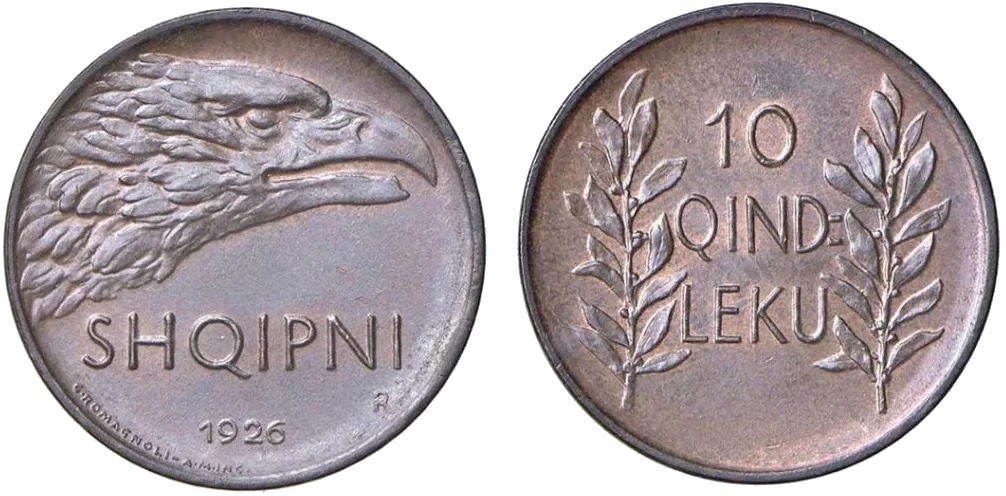
Next is the 1/4 lek. Made of nickel, they had a mintage of 506,000 coins in 1926 and 756,000 in 1927. They are very easy to find in average conservation for about 5 bucks, and in high conservation states, for between 40 and 60 bucks.
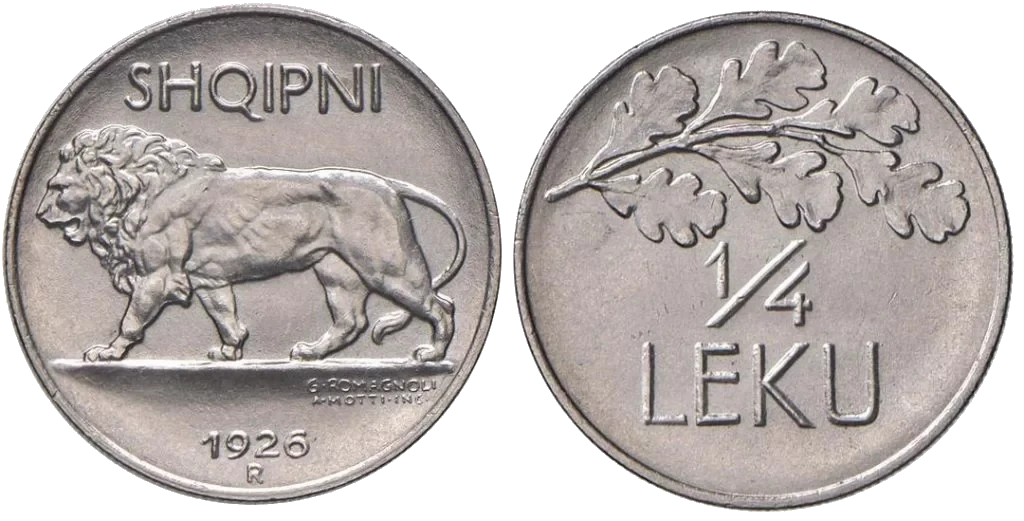
We move up a notch on the scale and go to the 1/2 lek, made out of of nickel. With a mintage of 1,002,000 pieces, one in average condition is worth between 2 and 4 bucks, the price of a coffee. In high conservations, between 10 and 15 bucks.
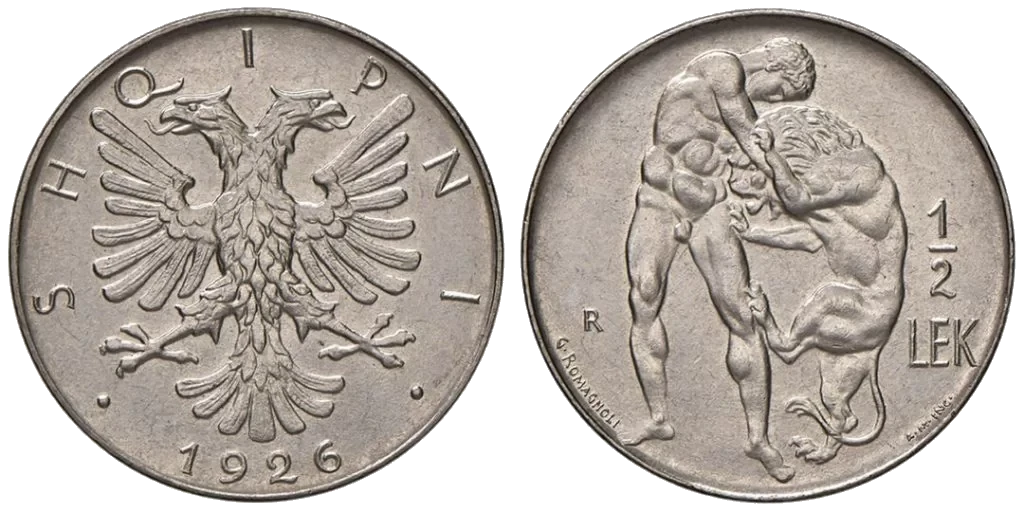
We arrive at the units: the 1 lek coin, made of nickel. This is the easiest to find in this series, as over three million were issued between 1926 and 1932 (although those from 1932 are dated 1931). Like the previous one, a coin in decent condition can be obtained for a couple of bucks. A uncirculated one, for about 10 bucks.

In the next level, the coin series takes a rare leap to the 2 Franga Ari, which is worth 10 leks. They are made of 10 grams of .835 silver and about 160,000 were issued between 1926 and 1928. In high conditions, they can range from 500 to 700 bucks.
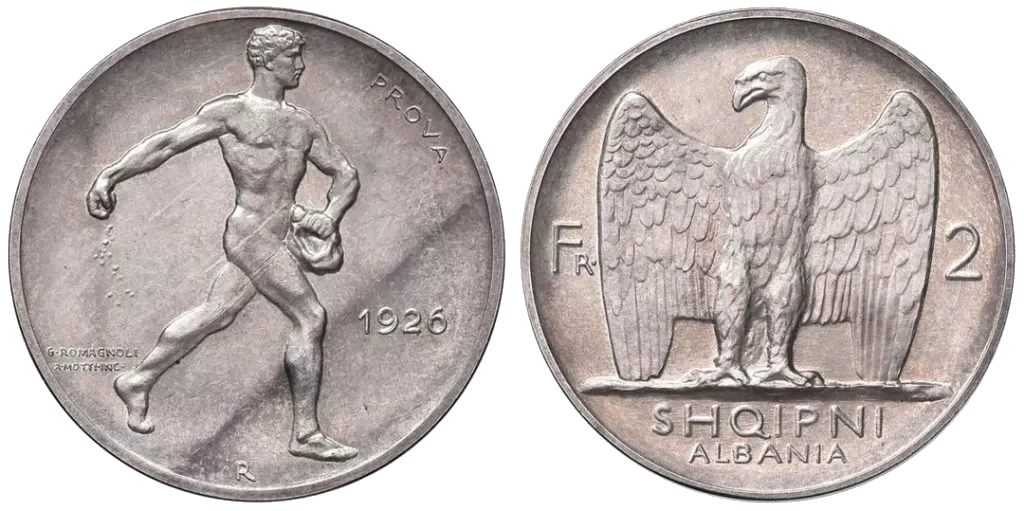
The second and last silver coin in the series is the 5 Franga Ari, equivalent to 25 leks, with its 25 grams of .900 silver and a not insignificant 37 millimeters in diameter. 100,000 were issued between 1926 and 1927, and today, in high conservations, it is worth between 1,000 and 1,200 bucks. In worse conditions, it is rare to see them for under 600 bucks.

We now enter the crown jewels of the 1926 Albanian series: the gold coins. The first is the 20 Franga Ari piece, equivalent to 100 leks. It is made of 6.56 grams of .900 gold, and there are several variations. The rare variant, which has some fasces and of which there are 100 pieces, is worth about 9,000 bucks. The standard coin, which is the one in the photo, had a mintage of about 10,000 coins and is worth between 2,400 and 2,600 bucks in high conditions.
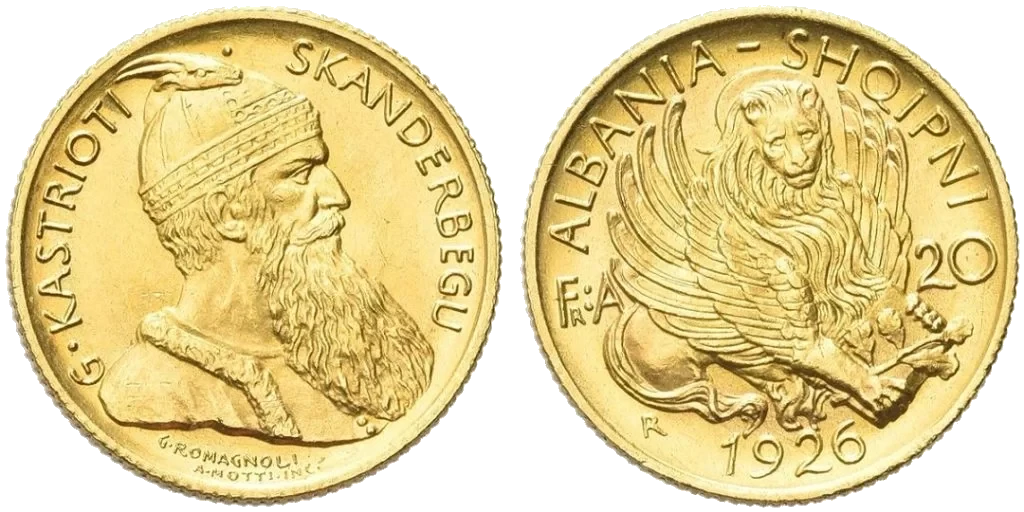
And the last coin in the series is the 100 Franga Ari, equivalent to 500 leks. It is a huge coin: 32.25 grams of .900 gold in 35 millimeters. It has three variations depending on the number of stars below Zog’s head (none, one, or two). With a mintage of 6,614 pieces, the value in high conservations is between 3,000 and 3,500 bucks.

All of them were minted in Rome, except for the 1930 and 1931 1 lek coins, which were minted in Vienna and London respectively, for reasons that we will see below. And they were all designed by Giuseppe Romagnoli, the same artist who would sign one of the most beautiful coin series of the 20th century, the 1936 Serie Imperio of Mussolini’s Italy.

Given the fame that the Serie Imperio has among coin collectors around the world, perhaps that’s why the design of the Albanian pieces reminded you of something you had seen before.
How did Zog end up?
Well, Zog proclaimed himself King of Albania in 1928. He managed to stabilize the country with his dictatorial ways, but Italian influence continued to grow.
After the Great Depression of 1929, the Albanian economy imploded, and it had to borrow money from Italy that it could not repay. In response, Italy demanded that Albania enter into a customs union with them, that the police be under Italian control, a monopoly on the country’s most important exports, and that Italian be taught in schools.
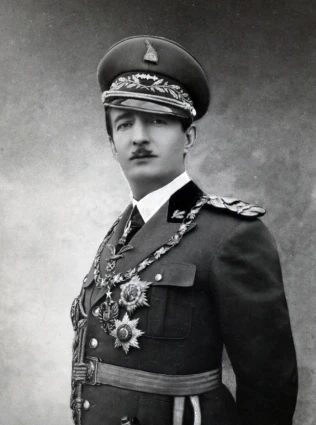
Zog said no way and kicked the Italians out of education and the army, and cut the country’s budget by 30% to avoid having to ask Mussolini for more money. He also tried to get closer to France, Austria, and Great Britain, but they basically gave him the runaround (which is why the 1930 and 1931 1 lek coins were minted in Vienna and London).
With no foreign support, Zog had to return to the Italian orbit. But Mussolini no longer trusted him, and in 1939 he invaded Albania and annexed it.
The rest is history.